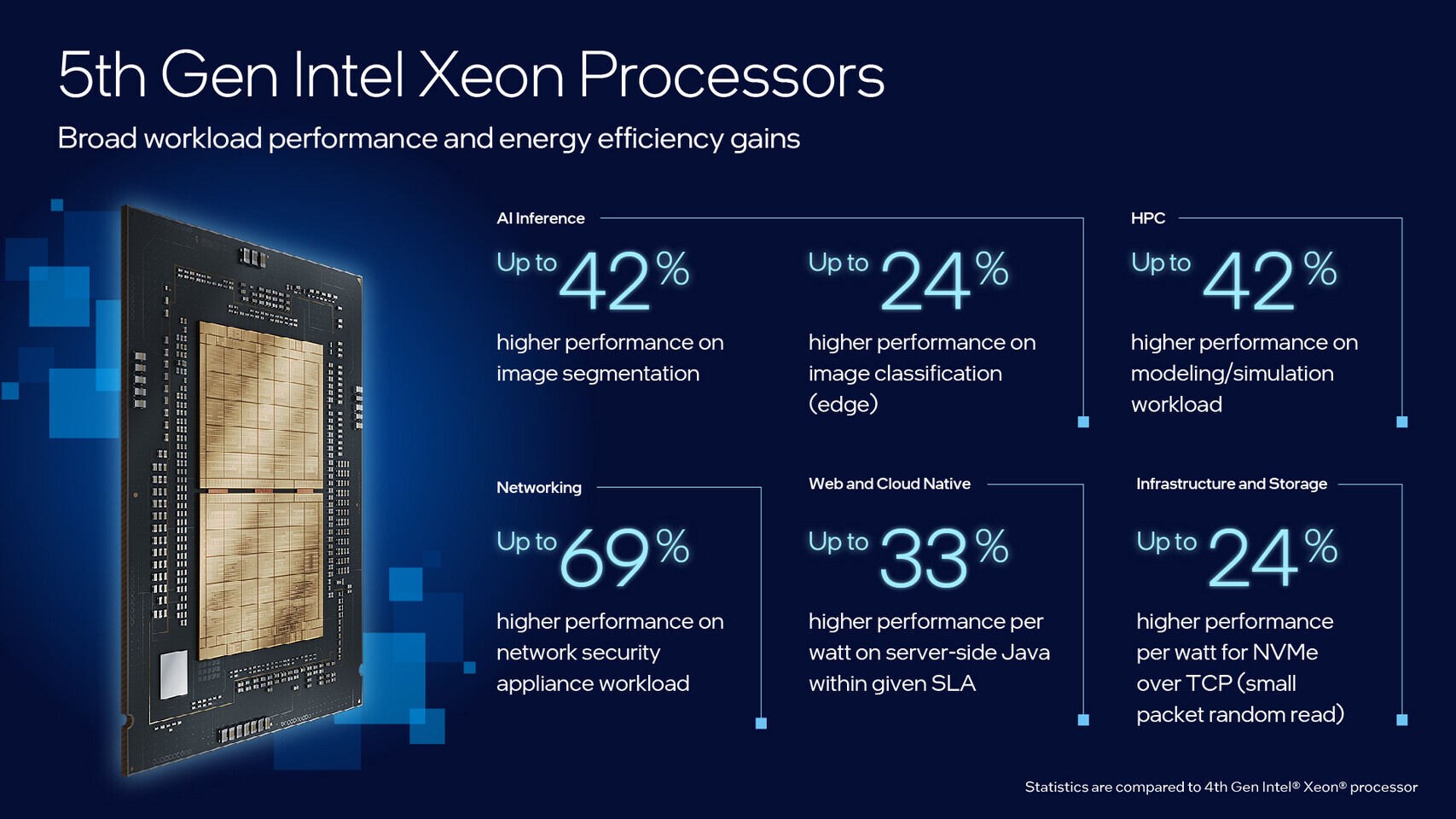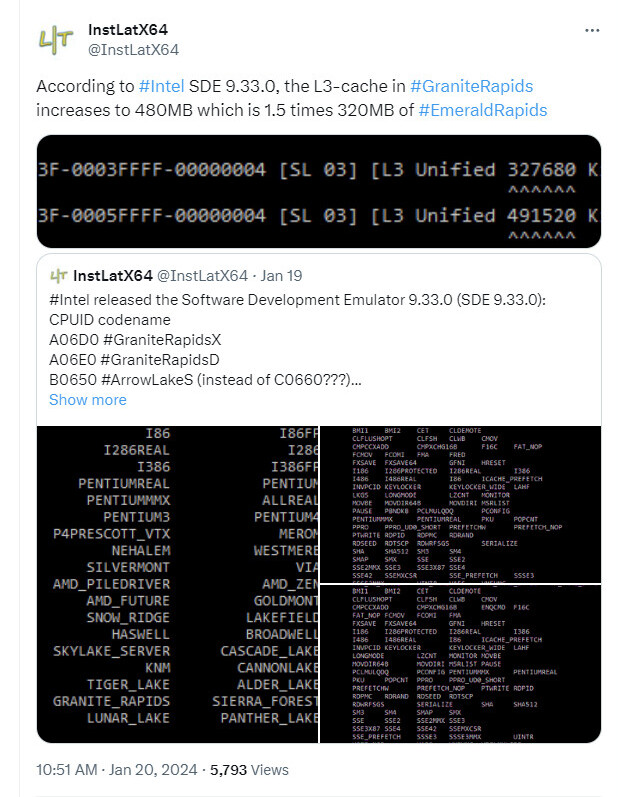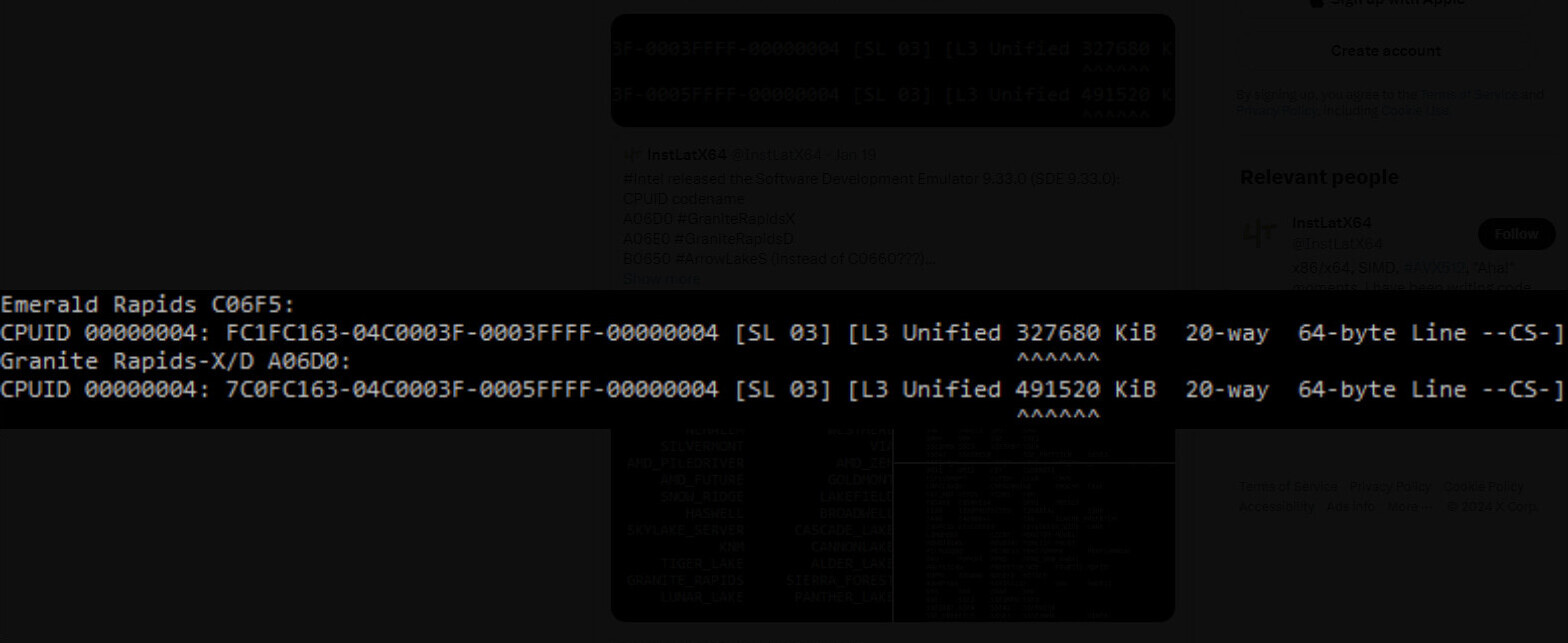Intel has recently released an update for its Software Development Emulator, now known as version 9.33.0. InstLatX64 discovered some interesting cache designations for the Fifth Generation Xeon Scalable Processors. The "Emerald Rapids" family was introduced at the "AI Everywhere" event in December, and sample units were soon made available for review. Tom's Hardware was impressed by the Platinum 8592+ CPU's tripled L3 Cache compared to the previous generation. This improvement contributed significantly to various workloads such as Artificial Intelligence inference, data center operations, video encoding, and general computing tasks. While AMD EPYC remains the dominant player in the enterprise CPU market, Intel's Emerald Rapids marks a significant improvement, especially in terms of Artificial Intelligence workloads and multi-core performance.
The SDE 9.33.0 update from Intel confirms that "Emerald Rapids" will have 320 MB of L3 cache. However, the next line reveals an exciting insight into "Granite Rapids" with a whopping 480 MB of L3 cache, representing a 2.8x increase compared to the previous generation. Intel's 6th Gen Xeon processor series, consisting of all P-core processors, is expected to launch in the latter half of 2024. Intel is clearly determined to compete with AMD in the enterprise CPU market, although AMD already has an advantage with its current L3 cache designations. The EPYC CPUs in Genoa and Genoa-X configurations offer maximum totals of 384 MB and 1152 MB, respectively. Intel's recently launched "Emerald Rapids" server chips are considered a strong competitor against AMD's EPYC "Bergamo" options.


